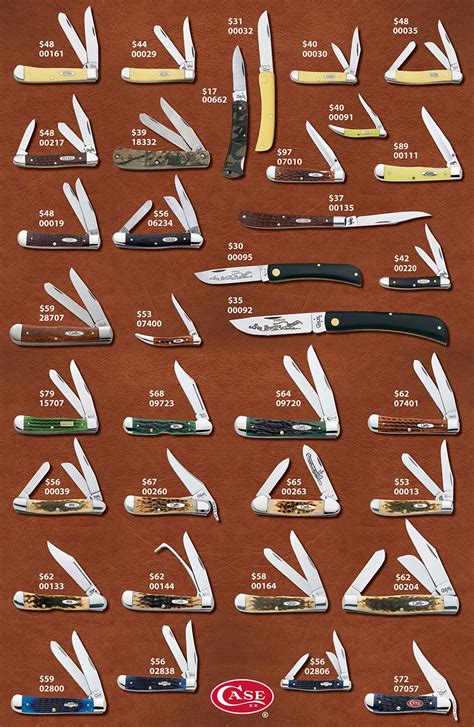Dating Case Knives: A Comprehensive Guide
Case knives, renowned for their enduring quality and classic designs, hold a special place in the hearts of collectors and knife enthusiasts. Dating these iconic knives, however, can be a challenging but rewarding endeavor. This comprehensive guide will equip you with the knowledge and tools necessary to accurately date your Case knife, unraveling its rich history and adding to its inherent value.
What Makes Case Knives Collectible?
Case knives' enduring popularity stems from their exceptional craftsmanship, using high-quality materials and time-honored techniques. Each knife tells a story, reflecting the evolution of Case's manufacturing processes and design aesthetics throughout the decades. Factors contributing to collectibility include:
- Rarity: Limited-edition knives, those with unique features, or those produced during specific periods are highly sought after.
- Condition: The preservation of the knife's original condition significantly impacts its value. Minor wear is expected, but significant damage diminishes its worth.
- Pattern and Design: Certain patterns and designs have become iconic, commanding higher prices among collectors. The evolution of these patterns over time also offers clues for dating.
- Historical Significance: Knives produced during specific periods, such as wartime production, or associated with notable events, hold particular historical significance and value.
Identifying Case Knife Markings: Your Key to Dating
Accurate dating relies heavily on understanding Case's marking conventions, which have evolved over time. These markings typically include:
- Pattern Number: A numerical code indicating the knife's specific pattern.
- Year Markings: Case has employed various methods for marking the year of manufacture, including:
- Year Codes: Letters or numbers used as shorthand for the year.
- Stamped Dates: Directly stamped years on the blade or tang.
- Pattern Changes: Subtle shifts in design or materials can sometimes pinpoint a production timeframe.
- Additional Markings: Look for marks indicating factory location, materials used (e.g., stainless steel), or special editions.
Understanding the nuances of these markings, particularly the changes over Case's long history, is crucial for accurate dating.
How to Research Your Case Knife's Year of Manufacture
Numerous resources are available to aid in your research, including:
- Case's Official Website: While Case doesn't provide a comprehensive online database for dating, their website offers valuable information on current patterns and production.
- Online Forums and Communities: Connect with experienced Case knife collectors on online forums. They often share their knowledge and can offer guidance on dating specific knives.
- Books and Publications: Specialized books and publications dedicated to Case knives are invaluable resources, providing detailed information on markings, patterns, and historical context.
- Case Knife Identification Guides: These guides often include detailed images and descriptions of markings, helping you pinpoint your knife's year of production.
Cross-referencing information from multiple sources is key to ensuring accuracy.
### What are the most common Case knife patterns?
Case produces a vast array of knife patterns, each with its unique characteristics and history. Some of the most common and sought-after patterns include the #630 Sowbelly, the #110 Trapper, and the #550 Stockman. The popularity of specific patterns has varied throughout the decades, offering another clue in the dating process. Researching the evolution of each pattern's design can significantly help in narrowing down the production timeframe.
### How can I determine the value of my Case knife?
The value of your Case knife depends on several factors, including its age, condition, rarity, and pattern. Considering the factors discussed earlier — rarity, condition, pattern, and historical significance — along with the knife's overall condition, contributes to a more accurate assessment. Consulting reputable knife appraisers or checking online auction sites (while acknowledging the variations in prices) can provide further insights into the potential market value.
### Are Case knives still made today?
Yes, Case knives are still actively manufactured today, maintaining their commitment to quality and traditional craftsmanship. However, comparing modern Case knives to vintage pieces reveals shifts in production methods, materials, and designs, highlighting the historical significance of older knives.
Conclusion
Dating Case knives requires a meticulous approach, combining careful observation of markings with thorough research and knowledge of Case's manufacturing history. By utilizing the resources and techniques outlined in this guide, you can embark on a fascinating journey to uncover the story behind your Case knife, enhancing its appreciation and adding to its intrinsic value. Remember, accuracy comes from thorough research and cross-referencing multiple sources.

